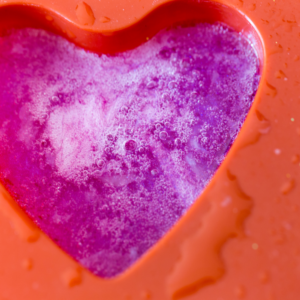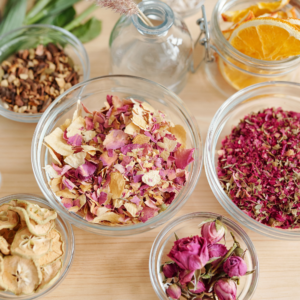Colorants can add a beautiful look to your handmade soap. Before getting started, it helps to know which ones work best for you & your recipe. Let’s take a look at what you may or may not use to colour your soap.
Mica Powders:
Mica powders are a great way to colour melt and pour soap. There are a wide variety of gorgeous colour options to choose from. Micas are shimmery and when used in a clear melt and pour base the shimmer shows beautifully. In a clear base the micas look true to their actual colour, but it does take away most of the transparency and the soap will look more opaque than transparent (depending on how much mica you use). When you use a white melt and pour base the shimmer usually doesn’t come through as vibrant, and it will make the colour more pastel/light.

Liquid soap colourants/dye:
Liquid soap dye is also another great way to colour your melt and pour soap. one drop goes a very long way when it comes to colouring. When used in a clear base, it colours the soap but keeps the transparency of the soap. You can also easily blend colours to make a new colour i.e. you can mix blue and yellow to get a green. When used in a white base the colour also turns to a pastel colour. One downside to using liquid colourants are that they bleed after a while, meaning if you use different colours in one soap, they may bleed into each other over time.
Natural colourants:
Natural colours that can be used in melt and pour soap include the following:
- Activated Charcoal
- Ultramarines
- Oxides
- Clays
- Certain spices such as Tumeric or Paprika
- Aloe vera powder
- Rosehip powder
Herbs and Botanicals:
*Please note the below
While the urge to add gorgeous, dried flowers in a transparent soap can be overwhelming, it is sad to say that most dried herbs and flowers will mould and turn brown in melt and pour soap. It looks very pretty for the first day or two, but unfortunately will not stay that way. The only exception to this rule is calendula/marigold petals and cornflower petals.





